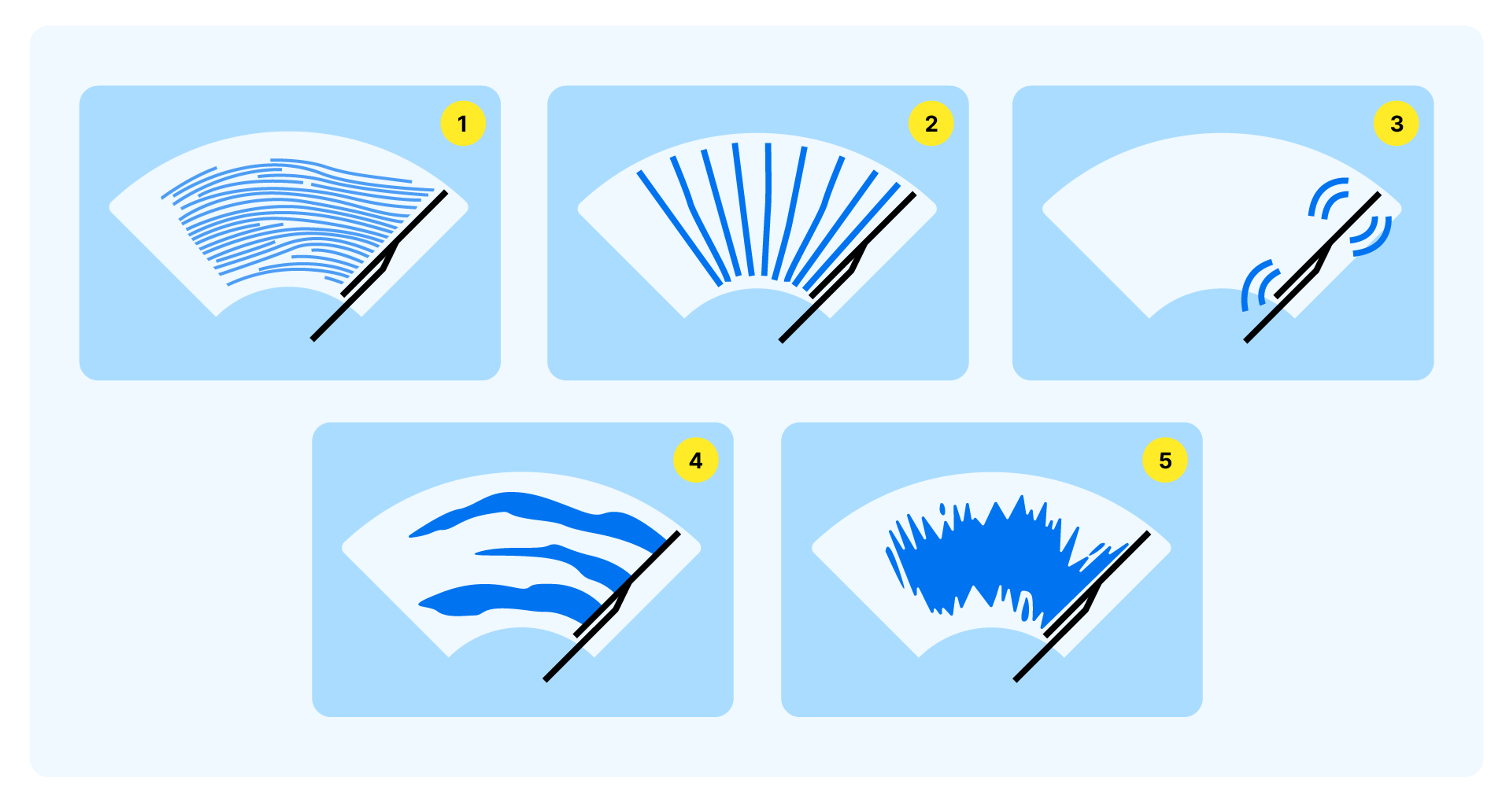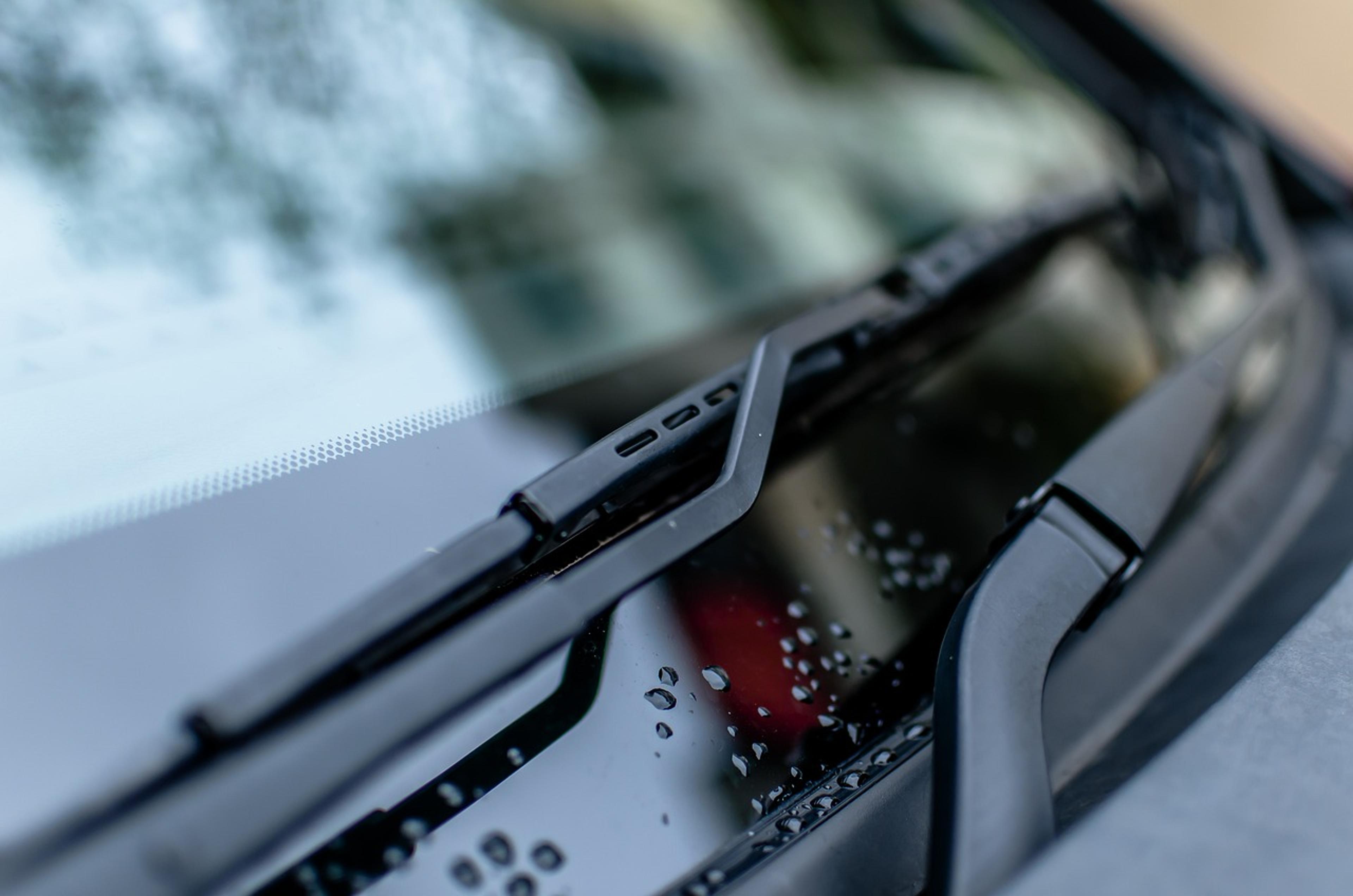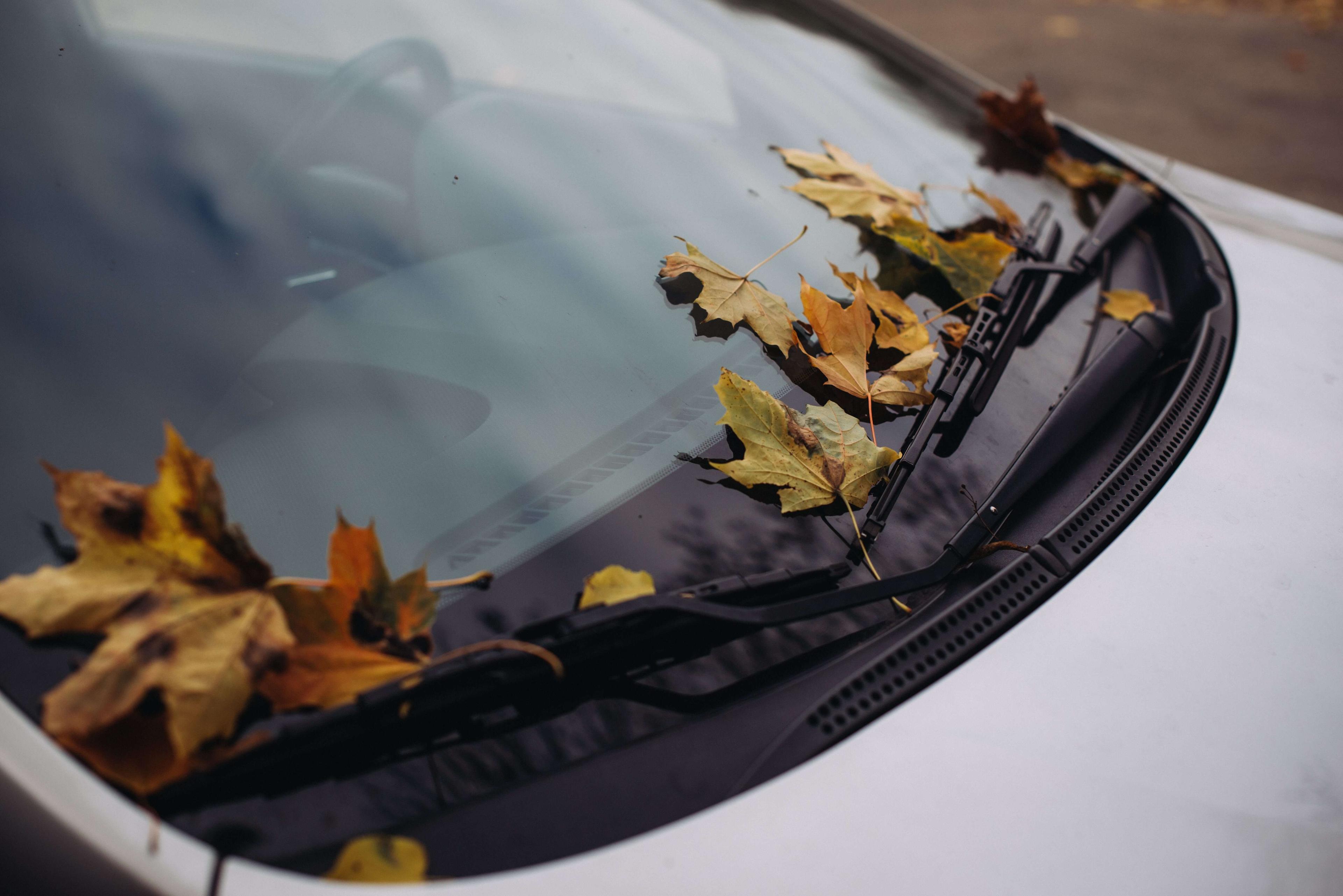
Wiper blades ensure clear visibility in bad weather. Yet, how often do we really pay attention to them during regular car maintenance, ensuring they’re up to the task?
Choosing the right wipers can make all the difference between a safe and stress-free drive and one where you have to deal with potential hazards.
With many options available in the market, how do you decide what windshield wipers you need? Let’s find out in this post.

Looks can be deceiving!
Looks can be deceiving! Don't risk your safety - check it with carVertical first
Choosing the right windshield wipers is crucial
The wiper system, although simple, is designed for a vital task – ensuring a clear field of vision for the driver.
Wiper blades remove rain, snow, sleet, and other debris from the windshield so that you can clearly see the road, other vehicles, and pedestrians. This can impact how quickly you will react in case of any obstacles or hazards on the road.
On the contrary, ineffective wiper blades can be distracting and frustrating. Constantly struggling to see through streaks or smudges can divert your attention from the road and create potentially dangerous situations. Besides, wipers that do not fit, are worn out or damaged, can scratch your windshield’s surface over time, leading to reduced visibility and costly repairs.
When to change windshield wiper blades
As a rule of thumb, you should replace your wiper blades every 6-12 months. However, how long wiper blades last can depend on many different factors, including climate and weather conditions (colder climates may require replacing them sooner), usage, wipers’ quality and materials used, even where you park your car (outside or garage), and similar.
Generally, there will likely be signs your wiper blades need to be replaced, such as:
- Streaking or smearing even after several passes, which can indicate that the rubber is no longer snug against the windshield (for the record, poor quality washer fluid can also be the reason for this).
- Skipping or missing spots, sometimes caused by the lack of use (especially in hot temperatures where blades tend to become out of shape).
- Squeaking and chattering noises as wipers move across the windshield, indicating that the rubber is no longer making proper contact with the glass.
- Cracked or split rubber that you can notice by inspecting it carefully.
- Bent or damaged blade frame that you can suspect if one particular area of your windshield just won’t get clean.

If you notice any of these signs, head to the store for some shiny new wiper blades. It’s a relatively simple task and not necessarily expensive, yet it can significantly enhance your comfort and safety.
How to choose the right wiper blades for your car
Choosing the right wiper blades may seem straightforward, but it’s not as simple as grabbing the first set you see on the shelf. When buying windshield wipers for your car, you have to consider several things to ensure optimal performance and durability.
Find the right size
Knowing your wiper blade size is crucial when buying a new set. Since they come in various lengths, using the correct size ensures that your wipers will effectively cover the windshield, providing maximum visibility.
How do you know what windshield wiper size you need, though?
- Check your car’s manual – it may provide specific recommendations for wiper blade sizes compatible with your make and model.
- Measure the wipers currently on your car. If you don’t have access to the manual, measure the length of your current wiper blades. The driver’s and passenger’s sides may differ, so measure them both.
- Ask for assistance at the store. Often, people at the store can help you find the right wipers’ size if you tell them the year, make, and model of your car. You can also show them one of your old wiper blades, and they may find a match.
Longer wiper blades may keep bumping into each other and not conform to the shape of the window properly, leading to obscured visibility and potential damage to the blades themselves. Similarly, blades that are too small won’t be able to clear the entire windshield, which will also compromise your ability to see the road clearly.
Choose the type
Although all wiper blades may seem the same at first glance, several different types of them are available on the market – each is designed to cater to specific driving conditions and habits.
You can choose from three commonly used design types for windscreen wipers:
1. Standard (or conventional)

This type of wiper blades is widely used because of their simplicity and cost-effectiveness. Their sizes range from 11’’ to 28’’ (28-70cm), so you will likely find the right fit for your car. Conventional wiper blades are also suitable for most weather conditions but may struggle with heavy snow or ice.
2. Beam (or flat)

Beam wipers have a sleek, aerodynamic design without a metal frame, which helps ensure even pressure across the windshield. They typically cost more than conventional blades but perform better in harsh weather conditions.
3. Hybrid

As the name suggests, hybrid wiper blades combine features of both conventional and beam blades. Their aerodynamic shape and robust construction ensure they perfectly flex to the shape of a windscreen for proper operation and provide improved performance in all weather conditions.
Ultimately, consider your budget, personal preferences, and local climate. For example, in windy areas, beam wipers can be more effective than conventional due to their aerodynamic design, but they can also be more expensive.
Learn about wiper blade materials
Regardless of the type, wipers can be made of different materials that offer varying levels of durability, performance, and resistance to environmental factors. You will mostly come across two – rubber and silicone.
- Performance. Both rubber and silicone wiper blades are effective in most weather conditions, although silicone tends to withstand extreme temperatures better. If you live in a relatively predictable and stable place weather-wise, any of those options should work well for you.
- Flexibility. Both rubber and silicone blades possess a high level of flexibility. They can conform to the windshield’s curvature, ensuring consistent contact with the glass surface. The difference between the two might become more noticeable in extreme temperatures – while silicon can remain supple in both very cold and hot climates, rubber blades may become less flexible and effective in the same conditions.
- Durability. Silicone wiper blades generally last longer than rubber ones. Over time, rubber tends to start cracking, especially when exposed to extreme temperatures and UV rays. Silicone, on the other hand, can withstand harsh weather conditions and last 12-18 months. While natural rubber blades are weaker than silicone, some rubber wipers feature a graphite coating, which can reduce friction and last almost as long as silicone.
- Cost. Rubber wiper blades generally have a lower initial cost, however, silicone wipers may offer a longer lifespan, potentially resulting in long-term savings.
Choose a reliable brand
Choosing a well-known brand can give you confidence in the quality and performance of the wiper blades. Established and reputable brands have a track record of producing high-quality products and a reputation to uphold, and they typically have proper customer support systems in place.
Some of the brands that are known for producing high-quality wiper blades are Bosch, Michelin, Rain-X, Trico, ANCO, Aero, SilBlade, and Goodyear. However, it’s possible to buy high-quality wipers from lesser-known brands; just make sure you check all the boxes related to your car, personal preferences, and environmental factors, and it never hurts to consult an automotive professional at the store.
Installing your new wipers
You can typically get your windshield wiper blades replaced at specialty shops where you buy your wipers, but you can also do it yourself. The package should include instructions on how to do it, also telling how to remove the old ones as well.

It usually goes like this:
1.Lift your wiper arms. This will give you access to the clip or fastening mechanism that you need to reach to remove the old blades. Some wipers only come 2-3 inches away from the windshield, so don’t force anything if that’s the case.
2.Release old wiper blades. Depending on the mechanism, you may need to slide the blade down the arm to unlock it, remove a clip that’s holding the blade in place, or similar. Be aware that standing bare metal arms can snack back and damage your windshield, so place a rag or a cloth underneath them or gently place wipers back yourself until you prepare new blades.
3.Install your new blades. Take out the new wiper and gently lift your wiper arms again. If you figured out how were the old blades attached, install your new blades using the same method. Some cars can have different blades for the driver and passenger sides, so make sure you’re attaching the right length blade to the correct side. Successful blade attachment should be accompanied by it clicking into place.
4.Place your wipers back on the screen. Once your new wiper blades are securely in place, carefully place them back on the windshield.
5.Test your new wipers. If you’re sure that the blades are sitting on the windshield correctly, turn on the ignition and give your wipers a test swipe. Properly functioning wipers should not be squeaking or leaving streaks; if they do, ensure you’ve attached the wipers correctly.
How to make your windshield wiper blades last longer
If you’re not up for replacing your wiper blades every 6-12 months, there are things that you can do to extend their lifespan a bit. Essentially, it all comes down to proper maintenance and a couple of practical tricks.
Keep the blades clean
Over time, various particles, dirt, and debris tend to cling to the blades, causing them to degrade. Not to mention that this can lead to accidentally scratching your windshield.
Make sure to clean your wiper blades regularly using a soft, clean cloth or washer fluid. Additionally, once they’re clean, you can use a rubber protectant to help prevent long-term drying and cracking (rub it into the blade with a clean cloth).
Clean your windshield
It’s impossible to prevent your windshield from accumulating dirt, bugs, and other debris, but regularly cleaning your window or washing your car will help you prevent buildup that can cause unnecessary friction and minimize its impact on your wipers.
Park in the shade
During hot weather, try to park in the shade to protect the rubber of your wiper blades from the harsh effects of the sun. This can cause the rubber on your blades to crack or become brittle prematurely.
Keep away from the trees, though, to prevent leaves, sap, or bird droppings from accumulating on your windshield and wipers.

Lift your wipers if it’s freezing
In freezing temperatures, lift your wipers away from the windshield to prevent them from sticking. Otherwise, the rubber might freeze to the glass, damaging your wipers once you activate them.
Avoid using wipers on dry windshield
Running wipers without any moisture or dirt to clear can cause unnecessary friction and wear on the blades. If you want to clean your window, use your blades with the washer fluid or when the window is wet from the rain or snow.
On the same note, ensure that your windshield washer fluid reservoir is full and regularly top it up to avoid causing strain to your wipers.
Use high-quality wipers
Invest in high-quality wiper blades. They mostly come with durable materials that can withstand various weather conditions and provide better performance over time. They also tend to have better rubber compounds that resist wear and tear.
To sum up
Maintaining the longevity of your windshield wipers is a simple yet often forgotten aspect of vehicle upkeep. Regular cleaning, cautious parking practices, and smart purchases can ensure optimal performance regardless of weather conditions while keeping you and other drivers safe on the road.
So, dedicate some time to taking care of your wipers occasionally, and they will repay you with reliable service, enhancing your comfort and improving visibility while driving.

Check your VIN
Avoid costly problems by checking a vehicle's history. Get a report instantly!
Frequently asked questions

Article by
Renata Liubertaitė
Renata is a writer with over 8 years of experience in publishing, marketing, and SaaS companies. Writing in various fields and covering highly technical topics has taught her to turn complex things into something everyone can understand. When not writing for carVertical, she loves DIY projects and spontaneous bike rides.
